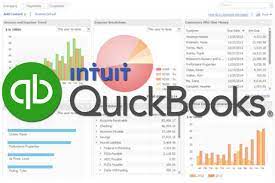Lenders consider several factors when determining whether or not a potential client is a reasonable loan risk for a mortgage. The front-end ratio is one of the factors. This post will explain a front-end ratio, how to calculate it, and the front-end vs. back-end ratio of an FHA mortgage.
What is the Front-End Ratio?
The front-end ratio, also known as the mortgage-to-income ratio, is a ratio that indicates how much of a person’s income goes toward mortgage payments. Divide an individual’s anticipated monthly mortgage payment by their gross income to calculate the front-end ratio. Mortgage payments typically include principal, interest, taxes, and insurance (PITI). Lenders use the front-end and back-end ratios to determine how much to lend.
Understanding the Front-End Ratio
Lenders consider the debt-to-income (DTI) ratio more important than having a stable income, paying bills on time, and having a high FICO score when deciding whether to extend a mortgage. The front-end ratio is one type of DTI ratio. It considers other associated costs, such as homeowners’ association (HOA) dues and the general mortgage payment.
For example, if a person’s anticipated mortgage expenses are $2,000 ($1,700 mortgage payment plus $300 HOA fees) and their monthly income is $9,000, the front-end ratio is about 22%.
How to Calculate Front End Ratio
The front-end ratio compares a person’s monthly mortgage expenses to their gross monthly income. Bonuses and overtime pay will not be included in the gross monthly income. Among the considered costs in the calculation are:
- Mortgage interest
- Taxes
- Insurance
- HOA fees, if applicable
In general, lenders prefer a front-end ratio of less than 0.28. Some lenders will make their selected front-end ratio public. Failure to meet it does not necessarily mean a definitive “No,” as some lenders will make concessions if other factors are favorable.
To calculate your front-end ratio, add your expected monthly housing costs and divide the total by your gross monthly income. Consider the following example:
- Expected monthly housing expenses: $1,100
- Gross monthly income: $4,000
$1,100 divided by $4,000 = 0.275
The front-end ratio is less than 0.28, which is considered acceptable by most lenders.
Investment Property Front-End Ratio
When financing a primary residence rather than an investment property, lenders may emphasize your front-end ratio more. Lenders will emphasize your back-end ratio more when considering a mortgage on an investment property. The back-end ratio is also known as the debt-to-income ratio.
The back-end ratio is calculated the same way as the front-end ratio, except that most monthly fees are included instead of monthly housing expenses. These are some examples:
- Housing costs each month
- Monthly payments for a student, personal, auto, or other loans
- Child support or alimony payments
- Credit card minimum monthly payments
- Other obligations
Typically excluded expenses are:
- Utilities
- Groceries
- Gas
- Taxes
To calculate your back-end ratio, add up all of your monthly expenses (excluding the usual exclusions) and divide the total by your gross monthly income (not including overtime and bonuses). Divide the result by 100 to get your back-end ratio.
Lenders usually prefer a back-end ratio of 0.35 or less. As with the front-end ratio, failing to meet a lender’s selected back-end ratio does not always mean you’ll be denied a mortgage.
When calculating the back-end ratio, will lenders consider the rental income from an investment property as part of your gross monthly income? They could. Some lenders may weigh up to 75 percent of the documented or expected rent as part of your income if the property has an established rental history or a rental appraisal.
FHA Front End Ratio
Depending on your FICO credit score, the FHA End Ratio requires additional down payments. If your credit score is higher than 580 (considered “fair”), the minimum down payment is 3.5 percent. If your credit score is between 500 and 579, you must put down 10%.
FHA Debt-to-Income Ratio Requirement (Front and Back End Ratio)
The debt-to-income ratio (DTI) is the ratio of your monthly debt payments (which can include student loans, credit cards, mortgages, and other types of credit) to your monthly pre-tax income. For example, if you earn $2,000 per month and spend $450 on debt payments, your DTI is 22.5 percent. Lenders use this metric to determine whether you will likely repay the loan you’re applying for.
The FHA generally requires a front-end DTI ratio of 43 percent or less, which varies depending on credit score. Your FHA front-end DTI (monthly mortgage payments only) should be 31 percent or less, and your back-end DTI (all monthly debt payments) should be 43 percent or less.
Individual lenders may also have more stringent requirements. You must disclose all debt and open lines of credit to the FHA during the application process.
Compensating Factors for FHA Debt to Income Ratio
If borrowers meet various compensating factors, FHA guidelines allow lenders to allow for higher DTI ratios (Front and Back End Ratios). These different scenarios help to mitigate the risk of approving mortgages with higher DTI levels. Among these compensating factors are the following:
- Residual Income – Lenders may allow higher debt-to-income ratios if the borrower has significant funds remaining each month after all expenses are paid.
- Cash Reserves – Another compensating factor would be if the borrower has significant cash reserves on hand after closing in the event of a financial emergency.
- Payment Shock – Payment shock occurs when a borrower’s monthly housing payment increases significantly when purchasing a home and transferring from the previous rent/mortgage payment to the new proposed payment. If the borrower’s payments remain nearly stable under the new mortgage payment scenario, lenders will be more willing to approve the higher DTI.
- High Credit Scores – If you have a high credit score, you have demonstrated financial responsibility. This will go a long way toward approving me for a higher DTI.
- Employment Stability – Have you been working at the same place for a long time, or have you been bouncing from job to job with various gaps in employment over the last few years? It will be critical to establish a consistent source of income.
FHA lenders may allow DTI Ratios (Front and Back End Ratios) of more than 50% with these and other compensating factors.
What Is the Ideal Front-End Ratio?
Most lenders prefer a front-end ratio of no more than 28 percent for most loans, 31 percent or less for FHA loans, and a back-end ratio of no more than 43 percent.
Higher ratios indicate a greater likelihood of default. However, lenders may accept higher ratios if certain conditions are met (for example, substantial down payments, sizable savings, and favorable credit scores). For instance, if a borrower with a high front-end ratio pays half the purchase price as a down payment or significantly increases his savings, lenders may be more willing to offer a mortgage.
If the loan is denied, the borrower can reduce debts to lower the ratio. The borrower may also consider a cosigner on a mortgage. FHA loans, for example, allow relatives with sufficient income and good credit to cosign.
When you apply for a new mortgage loan or refinance-end debt-to-income ratio, these ratios inform lenders how much of your monthly income is consumed by regular debt obligations, which affects your ability to afford your new mortgage payments.
Front-end ratio
Your front-end ratio considers the relationship between your new estimated mortgage payment and your gross monthly income (earnings before taxes). Lenders generally prefer that your monthly mortgage payment not exceed 28 percent of your gross monthly income. If your ratio exceeds 28 percent, you will have difficulty convincing lenders to lend you money. Lenders are concerned that if you devote too much of your gross monthly income to your mortgage payment, you will not have enough money to cover the rest of your monthly bills.
Back-end ratio
Your back-end ratio examines the relationship between your total monthly debts – everything from your minimum monthly credit card and auto loan payments to any debt you may be paying off through small-business loans or mortgage payments – and your gross monthly income. Lenders prefer that your total monthly debt obligations don’t exceed 36% of your gross monthly income. Again, lenders will consider you a high default risk if you spend too much of your monthly payment on debt repayment.
Increasing your ratios
You can work to improve your ratios. First, you can increase your monthly income, reducing your front-end and back-end debt-to-income ratios. You can also reduce your monthly debt load by paying off credit card bills or making extra payments on monthly debts like student loans or auto loans. It may make more sense to postpone applying for mortgage loans until your debt-to-income ratios appeal more to lenders.
Credit ratings
Lenders will consider other factors besides your debt-to-income ratio when determining whether you qualify for a mortgage loan. The most important factor is your three-digit credit score. This score tells lenders how well you’ve previously managed your finances. Your credit score will be low if you have a history of not paying your bills on time and amassing large amounts of consumer debt. If, on the other hand, you’ve always paid your bills on time and don’t have a lot of credit card debt, your credit score should be higher. Lenders today consider a credit score of 740 or higher to be excellent.
Special Considerations
Many consumers cannot purchase a home because they have significant student debt. Even if they have excellent credit, many realize that their front-end ratios are too high for lenders. Borrowers can, however, restructure debt to lower impact on a potential homeowner’s DTI. They may, for example, be able to reduce the monthly payment on a student loan. Furthermore, federal student loans may permit fees of up to 10% of a borrower’s income.
Front End Ratio FAQs
What is a good front end ratio?
Lenders generally prefer a front-end ratio of no more than 28 percent and a back-end ratio of no more than 36 percent, which includes all monthly debts.
What DTI do mortgage lenders look for?
Because there is no single set of requirements for conventional loans, your DTI will vary depending on your situation and the specific loan you’re applying for. A DTI of 50% or less is generally required to qualify for a conventional loan.
Can you get a mortgage with 55% DTI?
FHA loans require only a 3.5 percent down payment. DTI is high. Suppose you have a high debt-to-income (DTI) ratio. In that case, FHA offers more flexibility, usually allowing you to go up to a 55 percent ratio (meaning your debts as a percentage of your income can be as much as 55 percent). Low credit score
What is the maximum front end ratio for a conventional loan?
28% of the total
The maximum front-end DTI for conventional loans is typically 28 percent. When you apply for a new loan with a standard 20% down payment, the lender will usually approve your request as long as it does not exceed this limit.
Related Articles
- BACK END RATIO: What It Is and How To Calulate It
- HOW TO PAY OFF MORTGAGE IN 5 YEARS: A Comprehensive Guide
- MORTGAGE CREDIT SCORE: Minimum Credit Required To Buy A Home
- How To Buy A House With Bad Credit: Detailed Guide In 2023
- How To Buy A Second Home: Step-by-step Guide (+FAQs)
- ALIMONY: What Should You Know Before Going Through With It?






